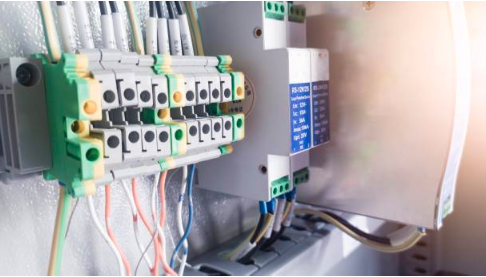Immense numbers of electric vehicles (EVs) are taking over the transport sector, and this makes having safe and efficient charging infrastructure more urgent. Commercial EV charging facilities in cities to residential EV wall chargers have come under the threat of electrical surges. These fluctuations that are usually as a result of lightning or utility grid switching or disturbances on power lines can severely harm sensitive parts of EV chargers. That is why EV charger surge protection has turned into an unconditional component of the contemporary design of charging stations. When used properly it can not only prevent damage of costly equipment but also allows continuity of operations and safety of the users. LSP is one of the major providers of this discipline, and this name could be regarded as famous in terms of innovation of various surge protection solutions.
Understanding Electrical Surges in EV Charging Systems
Fast-charging EV chargers consume large quantities of electric current and have complex electronics in the form of communication systems, converters, and controls. Such sensitive components are also vulnerable to overvoltage phenomena which can be as a result of electrical surges. In contrast to the conventional home appliances, the harm to EV chargers might be more dramatic due to the continuous connection with the battery management system of the vehicle and the grid.
Even residential areas are not safe; lightning induced lightning may cause temporary voltages during a lightning strike a few miles away by travelling through underground cable. Internal surges in the commercial charging stations may also result in shared transformer loads and start-stop operations that are frequent. Unless the necessary surge protection is provided, the disruptions can result in partial or overall charger failure, invalidate any warranties provided by the manufacturer, and necessitate costly downtimes to resolve some repairs or install a new charger.
Here, LSP surge protection technology is at its best. The provision of all forms of surge protective products specific to EVs guarantees that both the AC and the DC circuits of EV chargers are covered, making the world a safer place in regard to vehicles, users, and infrastructure.
The Surge Protection Devices Role in Residential EV Chargers
To those homeowners who invest in EVs, it is convenient and energy-efficient to have a Level 2 charger. Nevertheless, little attention is paid to the necessity of surge protection when the charger is installed. A home EV charger is usually hard connected to an electric panel of a house and when there is no surge protector installed voltage could travel all the way to the charger itself and even to the car.
Residential charger surge protection devices (SPDs) are small, mountable designs which can mount either in the main panel or in the charging station enclosure. Such equipment provides protection as a first line, sensing the overvoltage fault and neutrally diverting excess energy away.
Using a branded product such as LSP, the home owner will be assured that his or her investment is safeguarded against any unpredictable incidence of electrical phenomena. The LSP solutions are highly durable and efficient; hence, they are one of the very best solutions to residential surge protection due to the long-term safety as well as performance.
Commercial EV Charging Stations and Surge Risk Management
Business EV chargers are used by many people during business hours and tend to be put in well-travelled locales, such as shopping malls, car parks and transport stations. The installations typically include multiple fast chargers operating at once, accelerate electrical circuits, and subject the system to risk of cumulative surges.
Also, outdoor commercial stations are at the mercy of nature in terms of lightning, downpours, and changing grid power states. Such designs are demanding, and the surge protection systems have to be strong and scalable. In this situation, industrial-grade SPDs of LSP enter the game. They are designed so that the devices can cope with frequent surges, and high levels of discharge current over their performance characteristics.
The surge protection of the commercial charging stations is beneficial to meet the standards such as UL1449, IEC 61643, and domestic electrical codes. What is more important is that it increases customer confidence and guarantees uptime that is vital to public and fleet-based EV services.
How PoE Surge Protection and EV Charging Overlap in Smart Grids
Within the current elements of the smart grid infrastructure, there is a presence of surveillance cameras, access points, and communication devices normally distributed along the EV charging locations. These devices are often implemented with Power over Ethernet (PoE) adding even more surge risk. It should also be mentioned that PoE surge protection plays a paramount role in the given situation, particularly in the context of being combined with charging stations using the principles of centralized management.
Indeed, the surge protection systems that incorporate both PoE and EV chargers surge mitigation capabilities can cooperate to provide both data and power delivery infrastructure protections. As an example, in case a lightning strike reaches a charging station, the electrical spikes may connect to common networking lines and reach neighboring PoE devices such as monitoring cameras or control boxes.
LSP can solve both vulnerabilities since it provides SPD solutions to the power circuits and to the PoE line. This integrated strategy minimizes the possibility of spreading surge to various subsystems of a smart EV charging station, and provides the safest of the infrastructures.
Long-Term Benefits of Surge Protection in EV Charging Infrastructure
Surge protection is not merely providing equipment that can survive a strike. It is also about long term reliability and low cost of ownership. All surges, including minor ones, may degrade over time the electronic components of EV chargers. This is a phenomenon referred to as cumulative degradation that can either get the condition and be diagnosed prematurely.
With LSP surge protection solutions incorporated at the onset, the solution offers comfort to the station operators and homeowners. They will have lower maintenance requirements, longer lives of the chargers, and low chances of expensive interruptions of services. On top of that, safeguarded systems are more resistant to nature-related catastrophes or grid foul ups, permitting EV drivers to proceed with charging when they need it the most.
To operators who deal with networked charging stations, fewer unplanned outages will directly mean more revenue and happier customers. As the number of EVs grows and more thousands of charging stations continue to be installed into the grid, surge protection before it happens becomes both a responsible safety decision, and a sound business practice.







